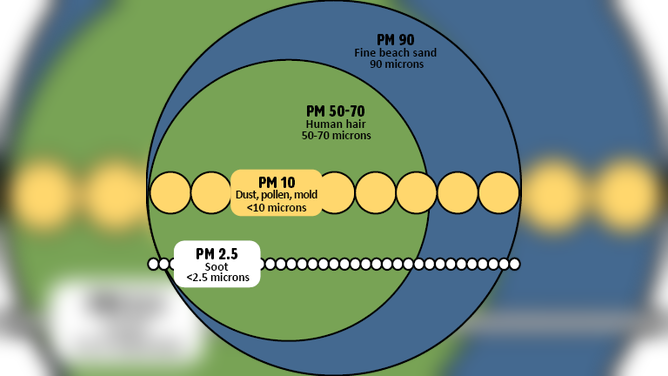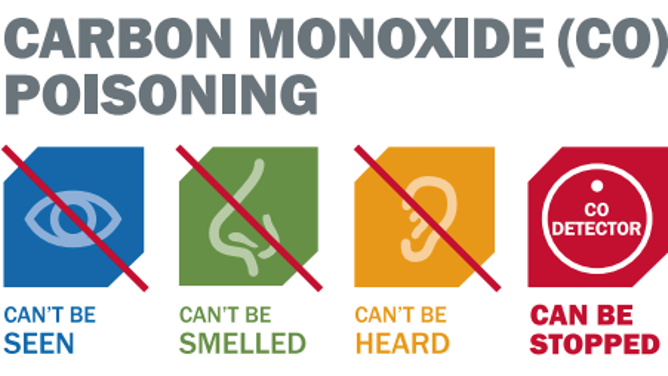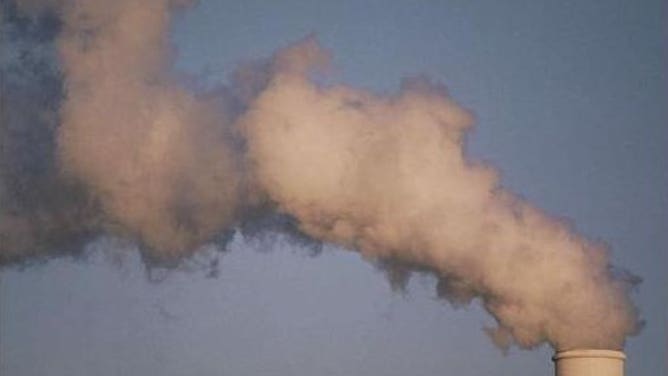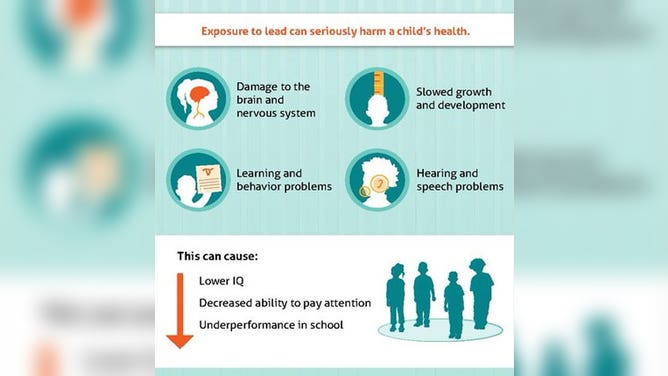These 6 air pollutants can cause problems for your health
Particles smaller than a human hair or a grain of sand are harmful to your health.
The air quality index explained
A regular assessment of air quality in the United States started in 1976, about six years after the Environmental Protection Agency was created.
Air quality managers monitor six common air pollutants: particle pollution, ozone, carbon monoxide, sulfur dioxide, nitrogen dioxide and lead, with the first two comprising the bulk of pollutants.
Here’s a step-by-step breakdown explaining why each of these air pollutants is bad for your health.
1. Particle pollution
Also known as particulate matter (PM), particle pollution is comprised of tiny pieces of solids or liquids that are suspended in the air. These can include dust, dirt, soot, smoke or drops of liquid, according to the Centers for Disease Control and Prevention.
WHERE DO OUR TOP AIR POLLUTANTS COME FROM?
Although particle pollution can affect anyone, there are some who might be bothered more than others. People with heart diseases, lung diseases such as asthma, older adults, babies and children are the most vulnerable to this air pollutant.
Particle pollution has also been linked to eye irritation, lung and throat irritation, difficulty breathing, lung cancer and problems with babies at birth such as low birth weight, according to the CDC.

Particulate matter can be smaller than a human hair or a grain of sand.
(Washington State Department of Ecology)
2. Ozone
The Environmental Protection Agency says ozone (O3) is a highly reactive gas composed of three oxygen atoms, whereas the most stable form of oxygen (O2) only has two such atoms. Ozone is both a natural and a manmade product that occurs in the Earth's upper and lower atmosphere.
Ground-level ozone, which is what we breathe, can have a negative effect on our health. People with asthma or other lung diseases, older adults, babies, children or anyone who exercises or performs strenuous activities outside are most likely to experience health effects from exposure to ozone, according to the CDC.
Ozone has been linked to coughing and pain while taking a deep breath, lung and throat irritation and wheezing or difficulty breathing during exercise or outdoor activities.

There are many factors that can lead to poor air quality, but the two most common are related to elevated concentrations of ground-level ozone or particulate matter.
(National Weather Service)
3. Carbon monoxide
According to the EPA, carbon monoxide is a colorless, odorless gas that can be harmful when inhaled in large amounts. It is released when something is burned, and the greatest contributors of it in outdoor air are cars, trucks and other vehicles or machinery that burn fossil fuels.
Inside your home, gas stoves, leaking chimneys or furnaces and unvented kerosene or gas space heaters also release carbon monoxide and can negatively affect indoor air quality.
If you breathe in air with a high concentration of carbon monoxide, it reduces the amount of oxygen that can be transported in the bloodstream to critical organs such as the heart and brain, the EPA says.
In an enclosed indoor environment, carbon monoxide can reach dangerously high levels and may lead to dizziness, confusion, unconsciousness and even death.
Such high levels of carbon monoxide are not likely to occur outdoors, though if levels are elevated outside, people with some types of heart disease are especially vulnerable when exercising or under increased stress. In these situations, short-term exposure to elevated carbon monoxide can result in reduced oxygen to the heart accompanied by chest pain, also known as angina, according to the EPA.

Carbon monoxide is a colorless, odorless gas that kills without warning. It claims the lives of hundreds of people every year and makes thousands more ill. Many household items – including gas- and oil-burning furnaces, portable generators and charcoal grills – produce this poisonous gas.
(Centers for Disease Control and Prevention)
4. Sulfur dioxide
The EPA says sulfur dioxide results from the burning of either sulfur or materials containing sulfur. The largest source of it in the atmosphere comes from the burning of fossil fuels by power plants and other industrial facilities.
Sulfur dioxide can negatively affect both your health and the environment.
The human respiratory system can be harmed with short-term exposures to sulfur dioxide, causing breathing to become difficult, according to the EPA. This is especially the case for those with asthma, particularly children.
Sulfur dioxide can even harm trees and plants, damaging foliage and stunting growth, when high concentrations are present in the air. It can also contribute to acid rain.
Other compounds in the atmosphere can react with sulfur dioxide to create haze and reduce visibility, the EPA notes.

Fossil fuels are emitted from a power plant.
(NOAA's Global Monitoring Laboratory)
5. Nitrogen dioxide
According to the EPA, the primary source of nitrogen dioxide is the burning of fuel. It forms from emissions by vehicles, power plants and off-road equipment.
Airways in the human respiratory system can become irritated when breathing in air that has high concentrations of nitrogen dioxide. Short-term exposures can aggravate respiratory diseases such as asthma, resulting in symptoms (like coughing, wheezing or difficulty breathing), hospital admissions or visits to the emergency room.
Prolonged exposures to high concentrations of nitrogen dioxide might contribute to the development of asthma and possibly increase your susceptibility to respiratory infections, the EPA says. Those at greatest risk of negative health effects include people with asthma, children and the elderly.
Like sulfur dioxide, nitrogen dioxide can also react with other compounds in the atmosphere to form acid rain and create a hazy sky.
6. Lead
Major sources of lead emissions across America include ore and metals processing and piston-engine aircraft operating on leaded aviation fuel, the EPA says. Some other sources of lead are waste incinerators, utilities and lead-acid battery manufacturers. The highest concentrations of lead in the air are often found near lead smelters.
The EPA noted that because of its regulatory efforts, which included the removal of lead from motor vehicle gasoline, levels of lead in the air actually decreased by 98% between 1980 and 2014.
WHAT IS AN AIR QUALITY ACTION DAY?
Lead can negatively affect the human nervous system, kidney function, immune system, reproductive and development systems and the cardiovascular system. Exposure to lead can also affect the oxygen-carrying capacity of the blood.
In current populations, the most likely effects to be encountered from lead exposure are neurological issues in children, according to the EPA. Infants and young children are the most sensitive to lead, and too much exposure could lead to behavioral problems, learning deficits and lowered IQ.

Exposure to lead can seriously harm a child’s health.
(Centers for Disease Control and Prevention)
